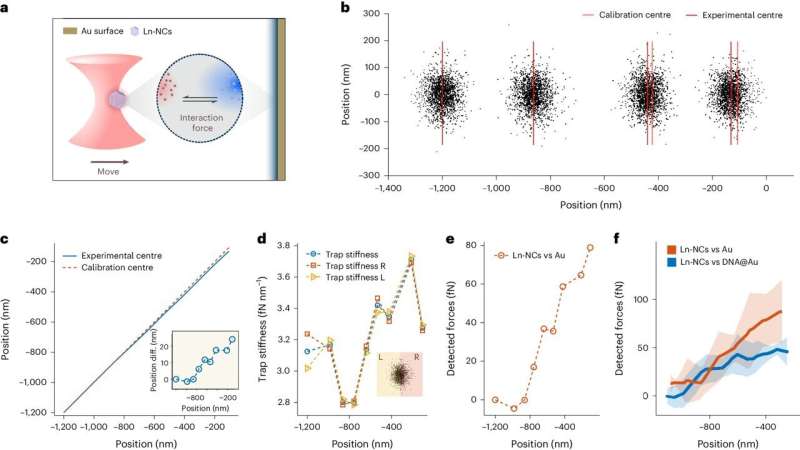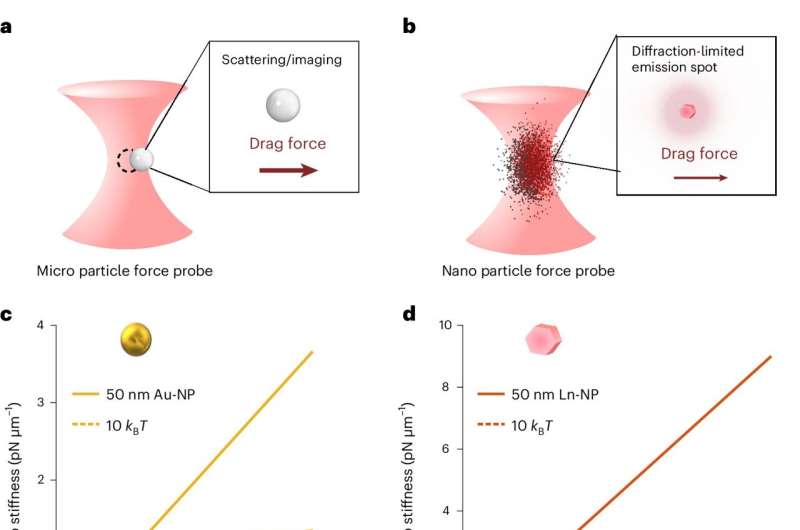This article has been reviewed according to Science X's editorial process and policies. Editors have highlighted the following attributes while ensuring the content's credibility:
fact-checked
peer-reviewed publication
trusted source
proofread
Advances in nanoscale force measurement opens doors to unprecedented biological insights

New research has revealed a new way to measure incredibly minute forces at the nanoscale in water, pushing the boundaries of what scientists know about the microscopic world.
The significant nanotechnology advance was achieved by researchers from Beihang University in China with RMIT University and other institutions, including the Australian National University and University of Technology Sydney.
The paper, "Sub-femtonewton force sensing in solution by super-resolved photonic force microscopy," was published in Nature Photonics.
The new technique, involving a super-resolved photonic force microscope (SRPFM), is capable of detecting forces in water as small as 108.2 attonewtons—a scale so minute that it compares to measuring the weight of a virus.
Lead researcher from Beihang University, Professor Fan Wang, said the key to this ultra-sensitive measurement lay in the use of lanthanide-doped nanoparticles, trapped by optical tweezers, which are then used to probe the minute forces at play within biological systems.
"Understanding these tiny forces is crucial for the study of biomechanical processes, which are fundamental to the workings of living cells," he said.
"Until now, measuring such small forces with high precision in a liquid environment was a significant challenge due to factors like probe heating and weak signal issues."

The SRPFM technique developed by Wang and his team addresses these challenges by employing advanced nanotechnology and computational techniques.
By leveraging neural network-empowered super-resolution localization, the team is able to precisely measure how the nanoparticles are displaced by tiny forces within a fluid medium.
Study co-first author from RMIT University, Dr. Lei Ding, said this innovation not only enhances the resolution and sensitivity of force measurements but also minimizes the energy required to trap the nanoparticles, thereby reducing potential damage to biological samples.
"Our method can detect forces down to 1.8 femtonewtons per square root of the bandwidth, which is near the theoretical limit imposed by thermal noise," Ding said.
The implications of this research are vast, added Dr. Xuchen Shan, co-first author from Beihang University. "By providing a new tool to measure biological events at the molecular level, this technique could revolutionize our understanding of a host of biological and physical phenomena," Shan said.
This includes everything from how proteins function within human cells to new methods of detecting diseases at an early stage.
The study also explored the application of this technology in measuring electrophoresis forces acting on single nanoparticles and the interaction forces between DNA molecules and interfaces, crucial for the development of advanced biomedical engineering techniques.
The team's findings not only pave the way for new scientific discoveries but also have potential applications in the development of new nanotechnological tools and improving the sensitivity of biomedical diagnostics.
More information: Xuchen Shan et al, Sub-femtonewton force sensing in solution by super-resolved photonic force microscopy, Nature Photonics (2024). DOI: 10.1038/s41566-024-01462-7
Journal information: Nature Photonics
Provided by RMIT University





















